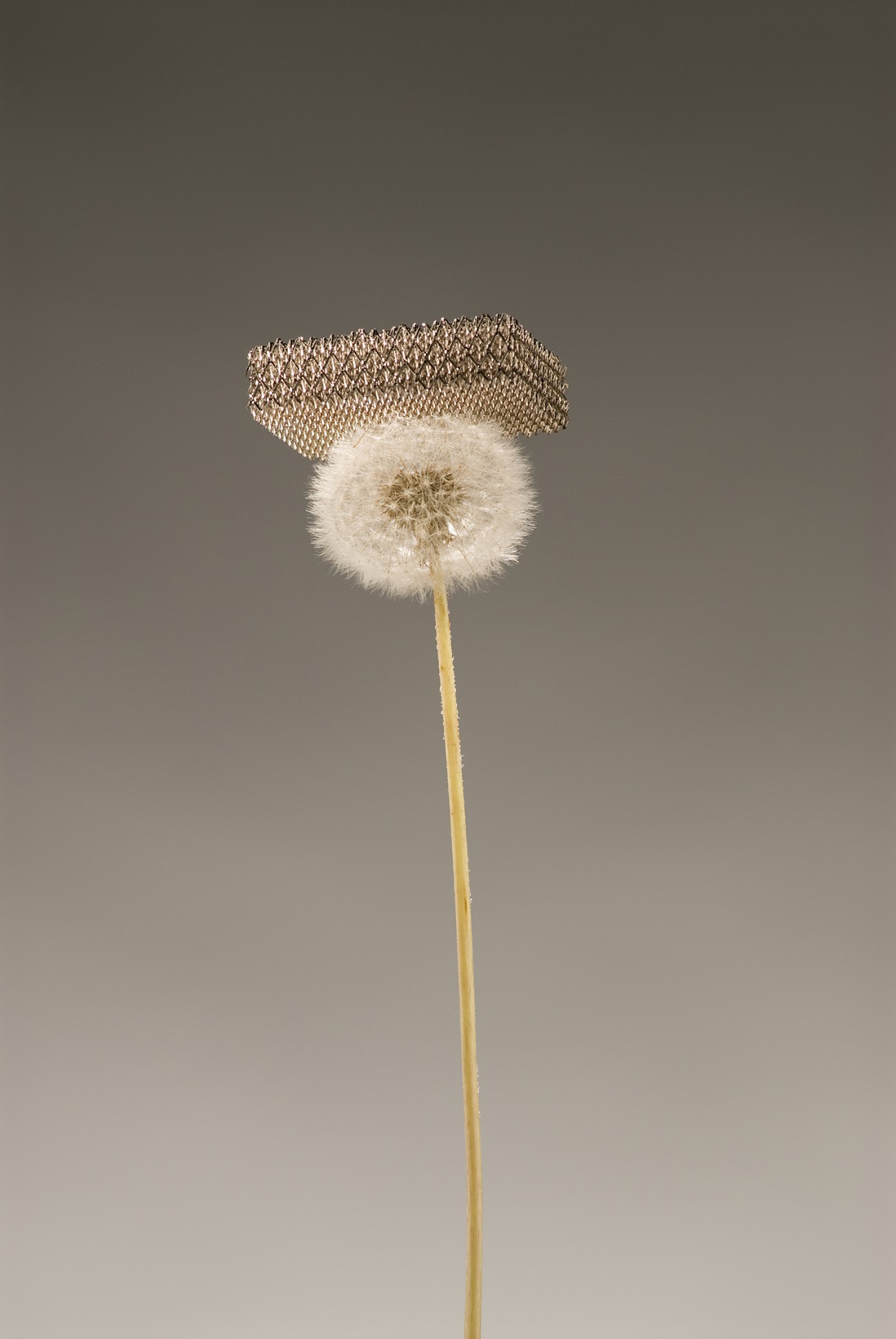Boeing files a lot of patents. From the filing for a force field to protect planes from blasts mid-air in 2012 to a laser-powered fusion engine earlier this year, these are all patents for potential uses of technology that may or may not become a commercial reality. Boeing now has revealed the world’s lightest metal structure, which it claims is 99.99% hollow. The revolutionary breakthrough claims to be 100 times lighter than Styrofoam, an incredibly strong material so light a dandelion puffball can support its weight. Called a microlattice, it is so strong the firm says an egg wrapped in the material would survive a 25 story drop . The material, called Microlattice, is a 3D open-cellular polymer structure made up of interconnected hollow tubes, each with a wall 1,000 times thinner than a human hair.


‘One of the main applications that we’ve been looking into is structural components in aerospace,’ said Sophia Yang, Research Scientist of Architected Materials at HRL Labs who worked with Boeing on the project. The trick is to fabricate a lattice of interconnected hollow tubes with a wall thickness of 100 nanometers, 1,000 times thinner than a human hair,’ Dr. Tobias Schaedler of HRL said. In addition to its ultra-low density, the material’s cellular architecture gives rise to unprecedented mechanical behavior for a metal, including complete recovery from compression exceeding 50% strain and extraordinarily high energy absorption. Originally developed for the Defense Advanced Research Projects Agency (DARPA), the novel material could be used for battery electrodes, catalyst supports, and acoustic, vibration or shock energy damping. HRL Laboratories also announced today that it will develop new ultra-lightweight materials for future aerospace vehicles and structures under NASA’s Game Changing Development Program. These new materials can enable NASA to reduce the mass of spacecraft for deep space exploration by 40 percent and are necessary for the journey to Mars and beyond. The focus of HRL’s effort is to develop ultralight sandwich panels based on our ultra-light lattice core materials. Attaching thin, stiff facesheets to the top and bottom surfaces of a relatively thick, lightweight core makes such structures. Sandwich structures provide high torsional and bending rigidity at low weight and have become the standard for lightweight design in the aerospace industry. Boeing’s researchers refer to this open-cellular polymer-structured material as “microlattice.” It takes a cue from bones—there’s a hard surface on the outside, but on the inside there’s mostly nothing. Microlattice is actually 99.9 percent air. While foam and honeycomb cores are used currently, additional weight savings and performance increases are sought from advanced cores.
Led by Dr. Tobias Schaedler, HRL’s team will develop lighter and stronger cores with innovative truss architectures that will be combined with carbon fiber composite facesheets.
The HRL approach combines ultra-stiff and ultra-strong materials (such as nanocrystalline metals) that provide higher strength than conventional materials with highly optimized truss architectures that enable unprecedented degrees of freedom to tailor the mechanical performance.
‘We are building on our breakthrough invention of ultralight metallic microlattices and will mature this technology to be applied in the next generation of space vehicles,’ says Dr. Schaedler.
